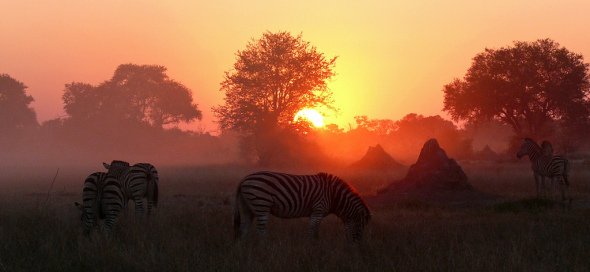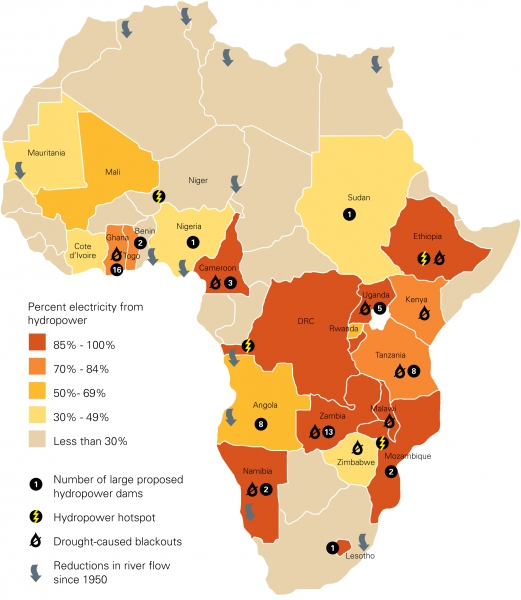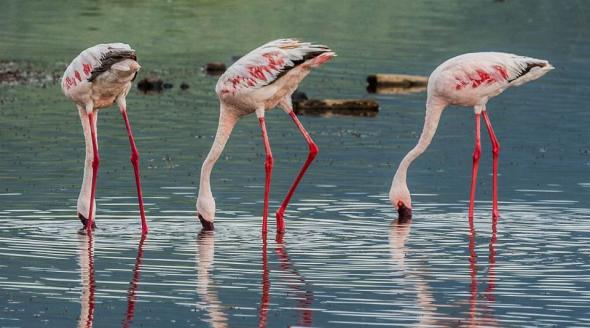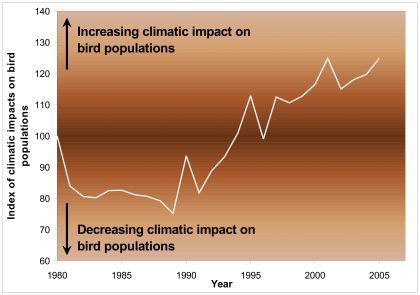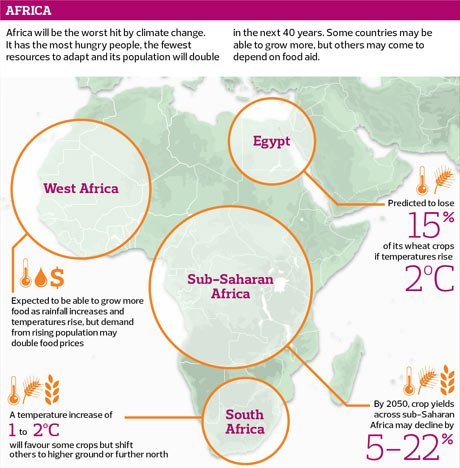Climate Change Destruction & Species Extinction Looming
The Intergovernmental Panel on Climate Change (IPCC) last month released its full summary on climate change and the effects we are most likely going to see with regards to our environment, species extinction, increased poverty, hunger, and civil unrest.
International Animal Rescue Foundation’s most cornering issue with regards to the report is that of the climatic effects that are going to be seen within Mama Africa, a still developing continent that has been ravished with civil unrest, war, poverty, and low unemployment. On my return from Africa as of last week I am still baffled by the lack of any professional and positive actions being taken by African ministers all over the African continent. 2050 we will most certainly see an increase in air temperature by some 2-3oc of which will place megafauna and fisheries in evermore danger although sea levels will not rise as some reports have suggested until at least another 150-160 years. Coastal erosion and low lying communities will though be affected by some slight increase in sea levels should Co2 emissions not be addressed sooner rather than later.
Turkana, Kenya has already been hit with low rainfalls which have had an unwanted devastating effect on to farming communities and cattle. The Turkana people are literally “fighting to stay alive” and yet the United Nations and Kenyan Government on my visit to the Kenyan village have not addressed the dire situation these people are within. Please view the link here of which a “Say No To Dog Meat.Net a registered organisation are currently taking action on regarding Turkana and their dire situation.
Within the next four decades maize prices could rise by up to 131 percent, there could be 17 million more undernourished children in the poorest countries, and some African farmers might have to give up agriculture if the planet keeps getting hotter, new studies show. $50,000 is roughly the average revenue produced by many small farms within Africa. Should we not see a decrease in CO2 emission and temperature levels then unfortunately the African people are going to be stuck in a rather dire situation.
Eighty per cent of rural African people depend on small family plots for their livelihood. Most farmers have less than one hectare of land and struggle to grow enough food to survive. Hence the reasons why International Animal Rescue Foundation Africa has recently been publishing on the ever-increasing-trend of dog and cat meat trade and increase in bush meat trade too within the African continent see here for more details. Food shortages are becoming more common and we cannot as a western world continue blaming the African people for such shortages.
The Intergovernmental Panel on Climate Change (IPCC) noted in its latest assessment that a two-degree Celsius increase in global temperatures by the turn of the century would have a catastrophic effect: water stress in arid and semi-arid countries, more floods in low-lying coastal areas, coastal erosion in small island states, and the elimination of up to 30 percent of animal and plant species.
Global temperatures could be kept below the two-degree Celsius tipping point if harmful greenhouse gas emissions were allowed to peak by 2015, and subsequently by 80 percent to 50 percent until 2050, the IPCC said. The International Energy Agency warned in its World Energy Outlook 2010 that the demand for oil and coal – the two biggest causes of greenhouse gas emissions – would have to peak before 2020 to keep the global temperature increase below two degrees Celsius.
The IFPRI global projections were accompanied by more detailed studies of African countries, which used the same climate models to show that as populations increased and soaring temperatures hit crop production, the numbers of malnourished children climbed by millions, even in the more developed countries such as South Africa. Only in Malawi, where the local modeller took into account nutrition policies currently in place, did the projections show that the number of malnourished children could fall by 2050.
Implementing policies to help countries adapt, make their people resilient to the impact of climate change, and reduce the risk of disaster was critical, said Lindiwe Sibanda, head of the Food, Agriculture and Natural Resources Policy Analysis Network (FANRPAN), an African think-tank.
Absalom Manyatsi, an agronomist and the lead author of the study on Swaziland, pointed out that his country, where the impact of climate change would be aggravated by a high incidence of HIV/AIDS, did not have a climate change adaptation policy. In fact, the government intended to increase sugarcane production for biofuel at the expense of maize production. Neighbouring Mozambique has an adaptation policy but is extremely vulnerable to natural hazards - 20 of the country’s 128 districts are highly prone to drought, 30 to flooding, and 7 to both risks - exposing about 43 percent of the population to natural hazards said Genito Maure, lead author of the case study on Mozambique and a senior lecturer at the Eduardo Mondlane University in Maputo, the capital.
Agriculture’s contribution to the gross domestic product (GDP) of Mozambique had dropped quite sharply from about 45 percent in 1989 to 20 percent in 2000, and up to 2010 had stabilized at around a quarter of GDP. “The climate change projections show food production is going to plunge even further with temperatures going up,” Maure said. Most people still depended on farming for an income and the country needed to make agriculture resilient, for instance by investing in infrastructure such as putting in a road network to improve access to markets and the flow of grain from the more fertile north to other parts of the country, he said.
Population growth would be a challenge in many African countries, said Delali Nutsukpo, a senior agriculture official in the Ghanaian government and lead author of the country’s case study. “We need to take measures to control population while investing in rural livelihoods programmes – but will that happen?”
At the beginning of this year International Animal Rescue Foundation began its ground surveillance project of threatened and endangered species of which is printed on their main Facebook page every Monday and Friday with snippets throughout the week on species endangerment of both flora and fauna. International Animal Rescue Foundation Africa has noted a rather stark increase in the number of mammals land, air and sea now facing population declines caused by the ravaging effects of climate disruption change. Mama Africa’s citizens will not be the only living creatures affected by such surges in temperature, the fact we’re now looking at species “extinction” and on a grand scale is very worrying.
Thus far there are only a small number of mammals that are to be affected by the ever-increasing effects of climate change and it’s something that we seriously do need to take on board now. Categorised below are the most affected mammals of which pose a significant concern to environmentalists and animal welfare organisations and how we are going to prolong their life and environment. The list may seem a meniscal number however if these mammals habit is affected just how does one take the necessary precautions into preserving their habitat? Furthermore just one species of mammal can represent some “thousands of others plus sub-species as well” should local and international extinctions occur because of greenhouse gas emissions than our ecosystem and biodiversity will be vastly affected.
International and local extinctions occurring caused by climate change;
The Emperor Penguin, which may face food shortages because of a reduction in shelf ice under which the bird hunts for the shrimp-like krill on which it feeds. Less ice also means smaller breeding areas for the penguins.
Ringed Seals, which must shift their ranges further north in order to find ice on which to raise their young.
The Arctic Fox, which faces competition from red foxes that are now able to expand their range into the tundra because of global warming.
The Beluga Whale, which faces increased human intrusion into its habitat due to reduction in the ice that previously made boat travel difficult.
Staghorn Corals, whose skeletons are dissolving due to the increased acidification of the oceans.
Clownfish, which are also threatened by oceanic acidification that affects their sense of smell, thereby hindering them in their search for the sea anemones in which they live and on which they depend for protection from predators.
Salmon, which will suffer from the fact that warmer water temperatures deplete the oxygen content in their breeding streams and rivers.
The Koala Bear, which, because of the way that the increased amount of CO2 in the atmosphere affects Eucalyptus trees, is suffering from the decreased nutritional content in the Eucalyptus leaves on which it feeds.
The Leatherback Turtle, whose reproduction is being affected by the rising temperatures of the beach sand in which it lays its eggs. Warmer temperatures cause dramatic imbalances in the sex ratios of turtle hatchlings.
The WCS list of animals affected by climate change includes five completely different creatures:
Bicknell’s Thrush, a species native to high-elevation regions of the Eastern US, is seeing major changes in its breeding habitat due to global climate change.
Flamingos are experiencing a reduction in the size and quality of the tropical and semi-tropical wetlands they depend on for survival.
The Irawaddy Dolphin, one of the world’s four freshwater dolphin species, is being affected by changes in water flow and salinity in its Bangladesh and Southeast Asian river habitats.
The Musk Ox faces increased predation by grizzly bears that will be able to expand their range into musk-ox habitat due to global warming.
The Hawksbill Turtle, which faces the same climate-related reproductive problems as the leatherback turtle on the IUCN list.
Furthermore species of bird indigenous to Africa and non-endemic are also beginning to feel the strain of climate change. Old and new world eagles, owls and vulture species populations are in decline with noticeable local migration patterns (not international migratory) seen to be altering.
Birds suffer from climate change effects in every part of the globe. Scientists have found declines of up to 90 per cent in some bird populations, as well as total and unprecedented reproductive failure in others. Specific groups of birds are at high risk from climate change: migratory, mountain, island, wetland, Arctic, Antarctic and seabirds.
While bird species that can move easily to new habitat are expected to continue to do well, bird species that thrive only in a narrow environmental range are expected to decline, and to be outnumbered by invasive species. African and Asiatic non-migratory species will feel the strain furthermore should illegal logging, increased agriculture and land seizures for tourism not be reduced.
Up to date scientific reports confirm a clear and escalating pattern of climate change impacts on bird species around the world, suggesting a trend towards “major bird extinction” from global warming. Scientists have found that bird extinction rates could be as high as 38 percent in Europe, and 72 percent in north-eastern Australia, if global warming exceeds 2 º C above pre-industrial levels (currently it is 0.8ºC above).
Climate change will also cause some of its most series but “least” predictable impacts by shifting the timing of natural events and by shifting species geographical distributions. This will rearrange animal and plant communities and ecosystems and disrupt bird’s relationships’ with predator’s competitors, prey and parasites. These changes are expected to alter the makeup and functioning of most if not “all”, the world’s ecosystems spelling a catastrophic change of events for species. Furthermore and based on scientific findings and conclusive research evidence clearly suggests that bird species will not be able to adapt. As explained above some local migratory birds may be able to adapt to the changes of climate change however new research is emerging that even this may not be possible.
The early warning signs of climate change can be seen in shifts in timing of important seasonal events for birds, such as eggs laying and migration. These shifts have been documented in North America, Europe, Australia, America and Africa. Some birds in Europe and Africa have even stopped migrating altogether with climate change becoming more rampant.
Human induced climate change could cause historically unprecedented rates of change with species forced to shift 10 (ten) times faster than during any climatic change seen at least since the last ice age. This will exceed the ability of many plants and animals to migrate or adapt thus leading to “extinction”.
International Animal Rescue Foundation Africa can now categorically state based on proven research, and conclusive climate modelling analysis that climate change will be the most destructive aggressors to our bird, mammal and aquatic species and “could” contribute sustainably to extinctions worldwide on a copies scale of birds, mammals and aquatic species. Birds and other mammals that “were considered safe” are no longer within a safe zone of which will all be affected in some way by increased temperature rising and habitat fragmentation.
Staying on the African track, will animals become under “increased” attack from local African communities that are fighting to stay alive? International Animal Rescue Foundation Europe believes so. The Europe (Raf) NGO stated;
“CO2 emissions responsible for increased climate change events have contributed to vast swathes of agricultural lands, river beds and cultures vanishing. With no land to farm in affected zones and little or any water readily available to distant cut off communities and farmers based on the current poaching trends of individual opportunistic poachers that poach to feed their families, we should under no circumstances believe poaching will decrease.”
“Evidence has proven from a variety of sources and our own within the Central African Republic, North Africa and West Africa that food is scarce and farming communities seriously depleted thus inducing starvation, crime and antisocial behaviour. Furthermore on questioning the locals all questioned had not received any form of aid or help from the United Nations or their own government to bulk up food mass, water and sanitation. This then poses the question of just how do these families actually survive” I think Johan, that we can categorically state that poaching to feed families and increased bush meat trade coupled with illegal logging and traditional medicine trade and demand within Asia will most certainly increase. Regardless of how governments and environmental agencies are now tackling demand and poaching within South Africa and Asia it’s not going to have any real profound effect on the “want” to stay alive” people here are desperate, what do we do Johan?.
The local communities have less than a $1-3 a week to live on and human population within the West, Central Africa and North Africa is vastly exploding, they need monetary funding, they need food they need water they are dying”. “Coupled with the increase in human population this is also having a profound effect onto South Africa a more “developed African country”. Human birth rates are increasing, agriculture, food availability and aid is decreasing, asylum seeking is increasing from the north to the south of which will also displace native mammal species thus seeing increased local extinctions of mammals and birds”.
“We led a 2 year mission into Africa back in 2001 of which bush meat poaching and “opportunistic” poaching was not as high as it was today based on chart surveillance and questioners”. “On questioning the many small communities within the CAR, Northern Africa and Western Africa families reported lack of rainfall, decrease in arable farming, and low income. I must also point out that now the local communities know they can gain a buck or two from Rhino horn and Elephant ivory then sadly we are not going to see any form of poaching decrease unless the African and Western Governments address their carbon emissions professionally and proactively sooner rather than later”. “At the moment Johan we are pleading with the international governments to help increase arable and cattle farming of which if we can see some form of agricultural help we can then monitor the local big game poaching pandemic and bush meat trade further hopefully with positive results seen”.
“We can no longer just address poaching and demand, we have to address and take on climate change, poverty, and agriculture too, and until this is addressed we will most likely by 2070 see some 15 species of megafauna wiped out with birds and small predators too”.
Johan that runs the African External Affairs Environmental Investigations Unit also stated another worrying aspect of how climate change “will” see many thousands of Africans suffer from starvation from lack of available fish and staple dietary foods that many Africans rely on. Of course if the worst comes to the worst then importations from other countries can be relied on. To feed though the majority of 1.033 billion (2011-2013) people will only increase CO2 emissions internationally furthermore as those countries providing Africa will not only have to fend for themselves but provide to Africa too. Continents around the globe are also under climate change disruption too!
Approximately 200 million Africans rely on fish as an important part of their diet. Ten million households directly derive income from fish production, processing or trade. Yet the enormous potential of fisheries to help feed and improve the nutritional status of the rapidly-increasing population of Africa is greatly under-realized, and precious aquatic resources are being degraded.
CO2-driven acidification and warming will gradually change ocean ecosystems over century-long timescales. These changes will likely have gained momentum by 2050 such that their impacts will be strongly felt for centuries. Biodiversity and habitat loss are already evident and will continue to degrade ocean ecosystems, while eutrophication and toxic plankton will continue to have localised, dramatic effects on ocean health. While ocean ecosystems are set to degrade, the inefficiencies of current fisheries practice means we get only a fraction of what we could get from the ocean. Humans only benefit from a small proportion of the ocean’s primary productivity - on land we eat herbivores, but we eat top-end predators from the marine environment. Poor and inconsistent regulation of the marine environment means we have also diminished ocean populations to the point where their inherent resilience and productivity is low. Population growth, especially the disproportionate growth of those who depend heavily on fisheries to underpin their livelihood (directly and indirectly), will make the issue of fisheries and fishery management more pressing over the next few decades.
What does the future hold for 2050 and marine aquatic fish stock?
The overwhelming evidence from all contemporary climate change models suggests ocean temperatures will increase almost everywhere over the next century – though some areas will warm more than others. The Arctic may become ice-free and the Antarctic Ice Shelf reduced. The tropics could experience regular (annual?) spikes in sea temperatures, leading to bleaching of coral reefs, with temperatures hostile to many of the existing biological communities. Warming will bring about reorganisation of existing communities, with migration of species away from the tropics, and only if suitable habitat is available elsewhere. The timing of important life-history events (phenology, e.g. spawning, egg maturation, migrations) will change, often leading to match-mismatch between trophic levels (e.g. zooplankton and larval fish) with consequences on whole ecosystems and bioresources (e.g. fisheries). Sea level is unlikely to change dramatically in the next 50 years, but shallow water nursery/feeding areas may change, as may chemical signals emanating from shallow water environments. Concluding big aquatic Africa predators will most likely be affected from depleted fish stocks thus seeing species forced to displace or regrettably perish from hunger and malnutrition. Extinction within the next 50-80 years will evidentially occur of many African and non-native African aquatic species.
Concluding:
Climate change is not going away. And, Africa will bear the brunt of it.
Africa consumes a tiny fraction of the world’s fossil fuels, yet it is predicted to shoulder far more than its share of the negative impacts of climate change. Between its size, vast natural resources, and unique weather patterns, the continent is especially susceptible to the effects of rising temperatures. Without comprehensive measures to understand and address the impacts of climate change, the well-being of both Africa’s wildlife and its people are in jeopardy. Climate change disbelievers can either shut up or buck up as climate change in Africa is here and Africa still a developing country will be affected the most.
Climate change is not a natural phenomenon. It is caused by mankind.
Climate change impacts our planet’s weather patterns, affecting everything from the global economy to food security to our physical safety. What’s more, greenhouse gases are hazardous to our health. Humanity created this phenomenon, and it’s up to us to address its effects and prevent further damage. Africa is home to just 17% of the world’s forests, yet deforestation on the continent is estimated to be four times the global average—and the pace is accelerating. Practices like rapid deforestation combined with excessive greenhouse gas emissions from around the world are all contributing to climate change. Rising temperatures are having a catastrophic impact on the people of Africa, resulting in unreliable farming seasons, low water supplies, increased droughts, severe heat waves, heavy storms, and flooding.
Part of the challenge in addressing climate change is that it can be a difficult concept to understand. Even once people understand the threats climate change poses, it is hard to get individuals, businesses, countries, and communities to change their behavior and adopt new habits, such as using eco-friendly cook stoves that require less wood than traditional cooking methods.
Solutions that can be adopted are;
Counteract greenhouse gas emissions by arranging carbon payments.
Provide training on sustainable land use and agriculture techniques.
Promote sustainable energy technology.
International Animal Rescue Foundation will release more data on this subject in the next few months based on their climatology reports and questionnaires - please take a minute of your time to fill in our survey below.
Thank you for reading and for taking time to fill out our poll.
Dr Jose Depre BEM, PhD, Ma EnVstu
Donate today by clicking this link to Fund African Wildlife Survival (F.A.W.S) below and help us to sustain our Africa pristine and natural wildlife heritage. For further information please contact the International Animal Rescue foundation here

